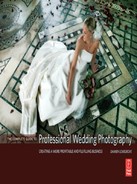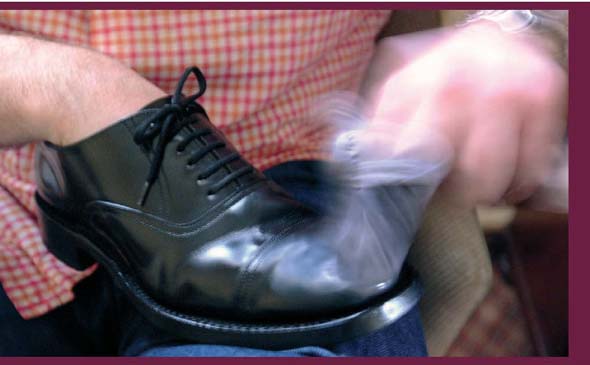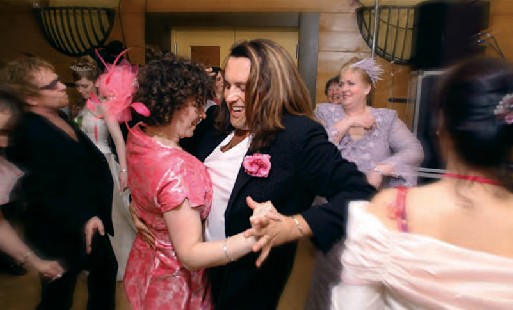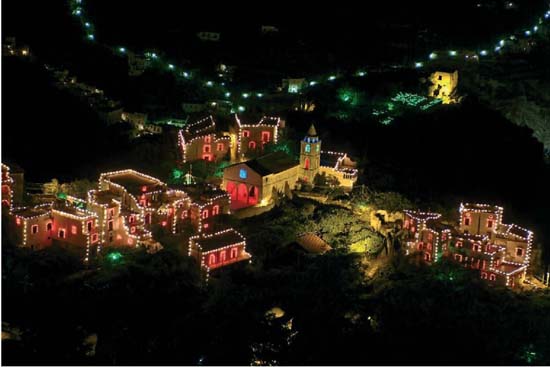Many people’s ideaM of marketing is rather vague. Something to do with promoting your business? Yes, but let’s get more focused than that. Marketing is the process of generating qualigfied leads. A qualified lead can be described as a couple who are getting married, on a date that you have available, within your coverage area, who like your style of work, and can afford your services. From now on I will refer to a qualified lead as a prospect. It’s worth noting that the business of converting prospects into clients is the sales process and is covered in the next chapter.
First let’s get one thing straight. Marketing ideas are useless unless acted upon. To put it another way, marketing effectiveness is directly proportional to levels of action or activity. If you haveread the section on time management then you will realize that marketing effort is firmly in box two.
So where do we start? It’s all too easy to focus all your advertising on yourself or your business and not on your prospects. We’ve all done it, just look at any ad and ask yourself, who is the ad really talking about? Is it talking about the prospect or about the photographer ? You must focus ALL your marketing communications on the prospect. Your ads, your brochure, and your website must NOT be self-serving. Your sales and marketing literature must pass the ‘So what?’ test – every time. Remember the prospect is interested in one thing and one thing only: what’s in it for them! Forget about how great your photography is, how many awards you have won, save that for later. Instead, begin with your focus on your prospects and their needs.

This tight composition of Julie’s excludes all unnecessary background distractions. It has a strong composition combined with the primary subject elements of hair style and wedding dress design.
The more you know about your prospect, the easier it will be for you to convince them that they need you to photograph their wedding. Ask yourself, why someone should book you? What are the benefits to them? When you’ve found some answers, use them in all your marketing communications. It’s that simple. A true ‘benefit’ differs greatly from a ‘feature.’ Features are about the product; benefits are about the prospect.
Next come your USPs, Unique Selling Points. These are the key elements that make what you offer – your product and service – different from what your competitors offer. Brainstorm you ideas for USPs with your team and write them down. You will need them when you design your adverts, website, or brochure.
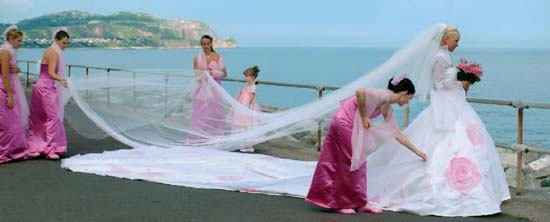
Fig. 3 ISO 400 f/5.7 at 1/2000th
With a dress this long it is hard to get it all in the frame at times.
ADVERTISING: IS IT WORKING FOR YOU?
AIDA is the acronym to remember. The four key steps to designing a great advert, brochure, or website are: Attention, Interest, Desire, and Action.
Attention. Start with an attention-grabbing headline – that’s the first rule of good advertising. Get the headline right and you immediately have your reader’s attention. Writing a good headline is a creative process. There are several different approaches. You could use ‘risk reversal’ as the principal element for your headline: ‘Perfect wedding photography – guaranteed.’ This is a very strong statement and attracts brides who worry about getting pictures they dislike. It’s a powerful statement and will demand the viewer reads on. Alternatively, you could use a question as a headline; ‘Are you worried about high reprint prices?’ Or ‘Would you like to own your wedding pictures on disk?’ You could use the power of ‘new’: ‘New – pictures on disk at full resolution for every bride.’ You could use a client quote. By using a testimonial, your headline gains instant credibility. Instead of it merely being a ‘claim’ that needs supporting and convincing, it becomes a ‘fact’ and is therefore instantly believable. ‘Our Lovegrove wedding album was the best investment we ever made’ – Julie & Steve Henley.
Interest. Encouraging your reader’s interest through the headline or body copy is the second key element of a good advert. ‘When choosing a wedding photographer, watch out for hidden extras. At Lovegrove Weddings, the price you see is the price you pay.’ Giving free advice is always a good way to maintain interest.
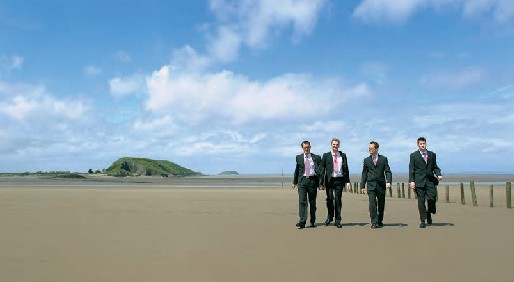
Fig. 4 ISO 320 f/4 at 1/2000th
Glancing sunlight on faces is less of a problem with figures in landscape shots like this taken at Weston Super Mare. The range and balance of colors make this shot work so well. The blue of the sky is opposed by the yellow sand and the green hill is opposed by the pink ties.
Desire. Creating desire is probably the easiest of the four elements to fulfill. Images are our weapon. Great images that show love, friendship, fun, romance, humor will create the desire we need in our advert. Avoid stock poses that other photographers may use. Use pictures that will appeal to a bride, not a photographer. Use images that make people look attractive, avoiding unflattering ‘exclamation’ shots of brides with their mouths wide open, for example. Your choice of images in your advert should reflect your USPs if possible. If you have a certain post-production look that your brides love, then use it in your adverts. If most photographers are using black and white images in their adverts, use color. Be different and let your advert stand out from the rest.

Fig. 5 ISO 400 f/6.3 at 1/90th
Flash would have killed this picture. I love the opportunity to frame pictures with doorways. The detail of the door on the left leads the eye to the group of girls.
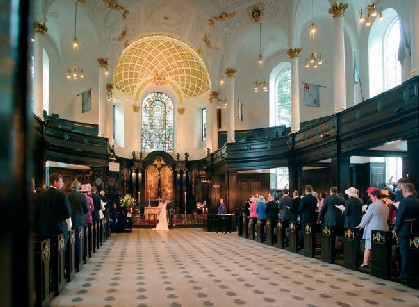
I had to sneak this interior picture of the beautiful and famous St Clement Danes Church in London. Occasionally you will come across a power hungry official who does not allow any interior photography, at any time, whatsoever. You just have to do your best when faced with such obstacles. My camera was on my monopod resting up against the door frame and I used a self-timer to take this picture while I looked the other way. The Church bells are featured in the children’s nursery rhyme ‘Oranges and Lemons.’
Action. A call to action is the final essential component that makes a great advert. The aim is simple: tell the reader what to do. Make it definite, and explain how taking action will benefit them. Make sure your call to action passes the WIIFM test: ‘What’s In It For Me?’ For example, a call to action can be used to set a price point. A supermarket might combine a call to action with a time-limited offer; ‘Visit your Tesco store today, chickens half price. Hurry, offer must end Thursday.’ The use of the word ‘your’ is a clever ploy of granting ownership to the reader. ‘Half price chickens’ is the WIIFM and the use of the word ‘hurry’ is a reinforcement of the call to action. Anothersupporting phrase is ‘while stocks last.’ Calls to action in Lovegrove Wedding adverts have included: ‘All the advice, ideas and inspiration you need to plan your perfect wedding are online now at www.lovegroveweddings.com’ and ‘Treat yourselves to the world-class photography of Lovegrove Weddings. Request your copy of their inspirational new brochure and showreel, either by visiting www.lovegroveweddings.com or calling 01275853204 today.’

Fig. 7 ISO 400 f/5.7 at 1/125th
I included the background balustrade in this picture to help set the scene at

If you are ever faced with strong repeating patterns like this avenue of trees use a long telephoto lens to compress the perspective. Place and pose your bride carefully. Julie was just out of the frame chatting to the bride while I ran back to get the picture.

Fig. 10 ISO 200 f/5.7 at 1/125th
Radiant beauty, fun, and verve are the key ingredients of this portrait. I placed the bride on the thirds with a window detail to balance the shot. The tunnel effect natural light completed the picture.
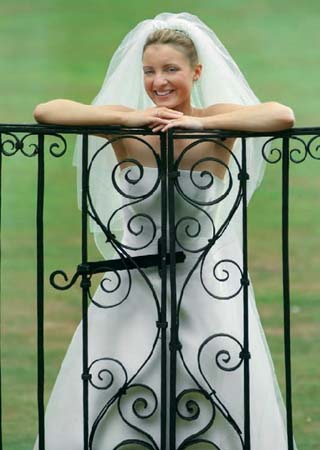
Fig. 11 ISO 800 f/4 at 1/2000th
I saw this hour glass detail in the gate and had the instant idea for this fun picture.
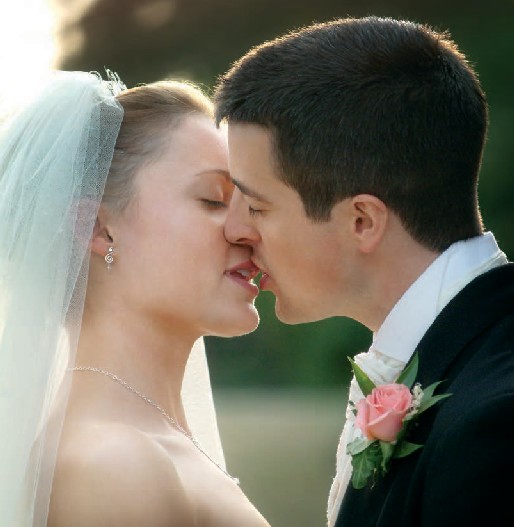
Fig. 12 ISO 800 f/5.7 at 1/500th
Photographing a kiss well is a tough thing to do. Rarely does the picture convey the intimacy in a sensual way. This picture shot into the light has all the magic elements required for success.
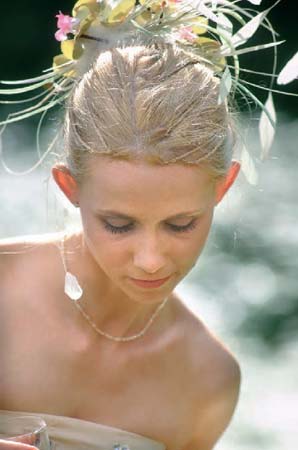
Fig. 13 ISO 320 f/4 at 1/1300th
At f/4 what you see is what you get, so composing out of focus backgrounds is easy to do. At f/11 this picture would have been full of competing distractions. The glance down makes the picture a Lovegrove.
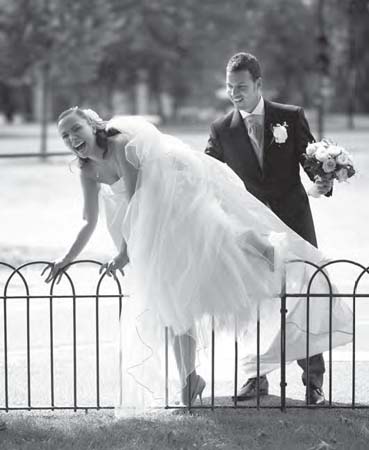
Fig. 14 ISO 400 f/4 at 1/800th
This moment was easily predicted as we left Hyde Park in London. I held back, switched to my 210 mm lens and shot into the light to capture this bit of fun.
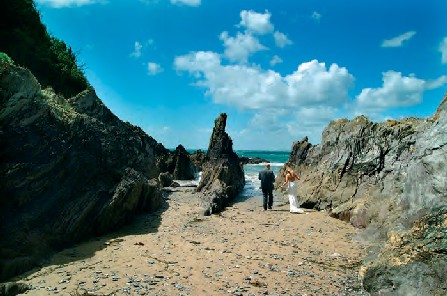
Fig. 15 ISO 320 f/5.7 at 1/1800th
The Cornish coast is a wonderful backdrop for wedding pictures. Julie and I spent 20 minutes shooting this couple on the beach and I remember there was not one shot of the couple’s faces in the final set. None were needed.
Why not try this yourself? Next time you write an advert, design a brochure or create a flyer, make sure it meets the AIDA criteria.
TEST AND MEASURE
Advertising budgets can run away with you if you don’t test and measure. A simple guide to remember is that every £ or $ spent on advertising should bring in £10 or $10 of business. Work with that 10:1 ratio in mind. If an advert fails to deliver this response there are several possible reasons. It might be that your advert does not follow the AIDA system. Your advert may be in the wrong magazine or in the wrong place in the right magazine. A competitor’s advertising may have eclipsed yours. Try this simple test: ask a female friend you trust to look through all the photography adverts in a particular wedding magazine and tell you which photographers she would contact and why.
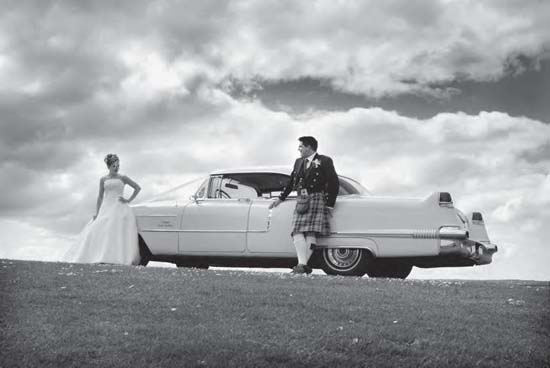
Fig. 16 ISO 400 f/11 at 1/500th
Lying on the ground often gets a great viewpoint but is not so good for my Armani suit.

Fig. 17 ISO 160 f/9.5 at 1/360th
A rich heritage of fine country houses helps provide great surroundings for UK weddings. However, I often find myself craving for the simplicity of clean modern design. The grass is always greener on the other side. Highclere Castle in Royal Berkshire.
When Julie and I want to check how effective our advertising is at getting response, we use a system known as ‘web or email redirect.’ The call to action in one magazine will say‘visit www.lovegroveweddings.co.uk for inspiration and adviceon planning your perfect day.’ The same advert in another magazine will use ‘visit www.lovegrove-weddings.com.’ Both addresses will redirect to our main site at lovegroveweddings. com. This makes it is easy to see the number of referrals each advert generates. You can use email addresses the same way. ‘Email [email protected]’ or ‘[email protected].’

I love spiral stairs. Great pictures come easily when you have repeating patterns together with a diminishing perspective and strong geometric shapes. I positioned the groom and the ushers to allow the viewers’ eyes to travel through the picture..
But remember, the results given by your statistics software will not indicate the amount of eventual business generated. This system just records the activity the advert generates. For a more comprehensive test, you will need the prospect to tell you where they first became aware of you and what made them take action. We cover this within our online enquiry form. Later we also confirm the information they entered. Once a prospect books you and becomes a client, ask them what magazines they like best and why. When you have gathered this valuable information, act upon it.
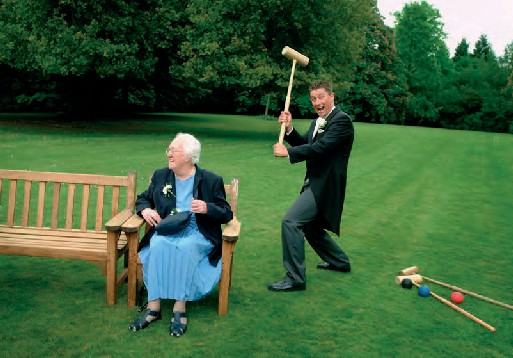
Fig. 20 ISO 320 f/4 at 1/400th
Leave space in your work for humor. The gravity of responsibility as the principal wedding photographer must not block your ability to see an opportunity for a fun picture.
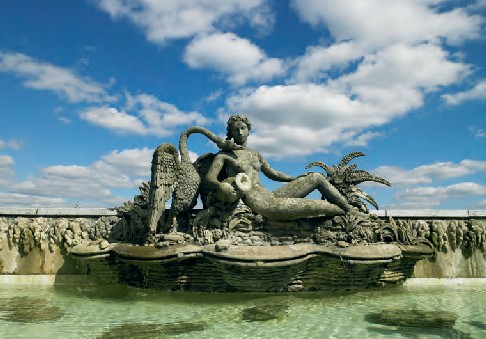
Fig. 21 ISO 400 f/13 at 1/500th
I used a wide lens to pull in the sky and water for this picture of the water feature on the balcony of the penthouse suite of London’s Dorchester hotel.
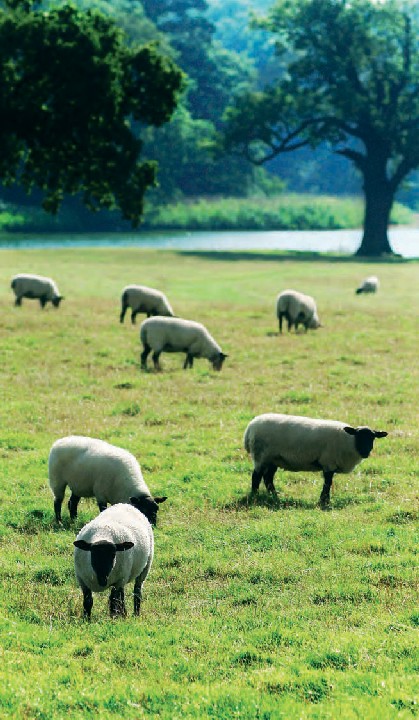
Fig. 22 ISO 200 f/4 at 1/2000th
The sheep in the grounds of Stapleford Park were ‘cute’ according to the bride. This picture made the album as a result. Tip: If you clap your hands the sheep will lift their heads and look at you for a moment long enough to get a picture.

Fig. 24 ISO 200 f/6.7 at 1/180th
The formal hedges at Charlton House provided a strong lead in to this simple picture.
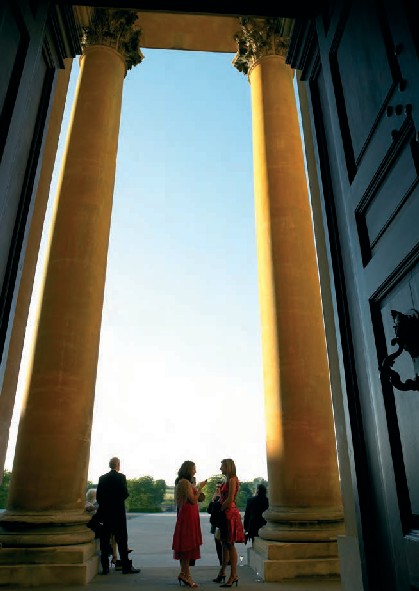
I love the sense of scale using a wide lens has created. The doors of Blenheim palace are shown in all their magnificence. A splash of red makes a picture like this leap out of the page. The blue of the sky, yellow of the sandstone and green of the foliage complete the primary color line up

Fig. 26 ISO 400 f/4 at 1/360th
Old architectural details combine easily with contemporary floral design by Johanne Shipp at Passion Floral Design in this picture. Plus two stops of exposure composition brought out the color of the orchids
If advert ‘A’ cost £1000 and generated 30 hits leading to4 clients, while advert ‘B’ at £1000 generated 20 hits that led to6 clients, you can deduce that advert ‘B’ is 50% more effective than advert ‘A.’ It sounds obvious, but the extra activity generated by advert ‘A’ may fool you into thinking it is having a better response. If you need 40 clients and each magazine is bimonthly you might decide to have a run of four adverts in each title. After all, a one-month sample is not a great indicator of future advertising performance. In the United Kingdom, we have found the best times to advertise are September to November and January to April. Keep checking the effectiveness of your advertising and stay in touch with your clients, to identify market trends. Ask what online forums or directories they visit. It will open your eyes to further opportunities.
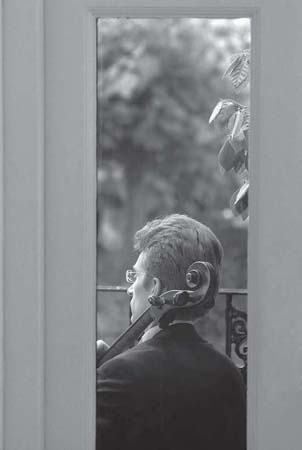
Fig. 27 ISO 320 f/4 at 1/100th
Less is more. This is my picture of the string quartet at a Hempel Hotel wedding.
WHERE TO ADVERTISE
Selecting places to advertise takes lot of common sense and a bit of research. The vast majority of brides-to-be read wedding magazines. As a result, bridal magazines can charge high prices for their advertising space. If you want to know what magazine to advertise in, ask your brides. Or, if you are just starting, go to a busy newsagent and while browsing the pages of your favorite photography title, keep an eye out for who picks up what wedding title. Lunchtime on a Monday is the best time for this exercise. Look at the magazines yourself. Ask yourself a few questions. If I were to get married would I choose my photographer from the adverts in this magazine? Do you find the magazine inspiring? Does the cover price reflect the quality of the content? What is the coverage of the magazine, national or local? If you are only offering to photograph local weddings, then don’t advertise in national magazines, as the vast majority of readers are likely to be outside your territory.
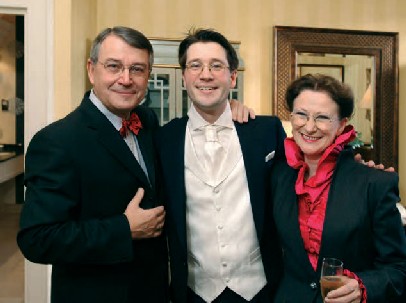
Creating a great rapport is essential to capture a picture like this. The expressions of the groom and his parents are a mirror of mine
The internet is another useful place to advertise. You can buy advertising from search engines in various ways. You can pay for a banner on another supplier’s website. ‘Pay per click,’ is the system in common usage as I write this book but the internet is evolving so fast that I expect ‘web real estate’ will soon be sold in other guises too. Keep asking clients and prospects what forums and websites they visit. When you do advertise online, test and measure thoroughly. Ask fellow photographers where they advertise and ask how effective their advertising is, then study your options. Search engine optimization is a system that may well generate more ‘hits’ to your site. But hits don’t mean clients so beware of companies wanting to charge big sums to ‘optimize’ your site. You can do it yourself with the help of one of the many free online guides. Remember, your website is a brochure, so don’t fill it with search terms designed to increase your hits, fill it with useful information that brides will want to read.
NETWORKING
It will pay you to cross promote with other wedding suppliers. A good place to start is to ask your clients and prospects what suppliers they are using. It may surprise you to find that the same names keep cropping up. An initial telephone call will open up opportunities. ‘I understand from my client, Penny Dollar, that you are the florist for her wedding. She is so excited about your creative ideas. I would love to come and see you. Can I treat you to lunch next week?’ At the meeting have a clear objective of what you want to achieve. Before the meeting, write down on a sheet of paper an ideal outcome, then a worst-case scenario. Next, detail any history you may already have, shared past clients, venues and so on. It’s always good to reinforce your mutual alliances in this way. Think through what you can do for the florist. Perhaps you can offer him or her complimentary pictures of their flowers from every wedding you work on together. If you have yet to work on a wedding, then offer them a half-day to shoot their brochure. Your name will be credited on their website and in the brochure that goesout to all their enquiries. In return ask them to mention you to all new leads. The process of shooting a brochure should be a fun rapport-building exercise. Do this type of networking with as many partners as you can. Always be sure to make detailed notes after each meeting and use the information wisely. Soon, your name will be the talk of the industry.
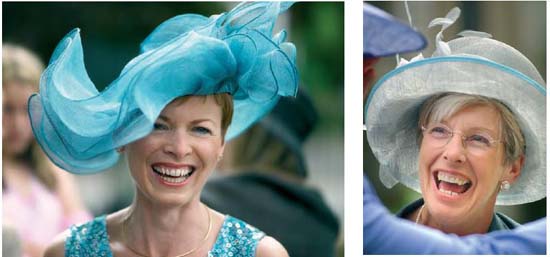
Both pictures f/4 Candid pictures of ladies in hats having fun always make the album. They are a principal part of the glamour of the day.
You should also approach wedding coordinators – they too are always hungry for pictures. Some coordinators are members of professional organizations and are bound by their codes of conduct. Others are happy to take 10% of your fee for a referral. Keep them happy if you want to work with them. Coordinators at hotels are often not very well paid, so it is always worth offering a tip, or giving them a gift if they recommend you. If you like the hotel and the coordinator, reward them with a gift even if the recommended bride doesn’t book you. That way you will get the next referral. Once you have become established at a venue it may be worth having a display album on view there. If you decide to go down this route make sure the pictures were all taken at one wedding at the venue in question. When you get your next lead from the venue, ask ‘Were you shown my album?’ If not, follow it up. Keep testing your system.

Fig. 31 ISO 400 f/4 at 1/400th
This charming family portrait shows all the qualities of a Lovegrove moment. I created the fun and held the young family’s attention while Julie captured the action.
Dress designers love photo shoots. Offer your services to them, get into their brochure and get mentioned in their store. A simple letter after a wedding saying ‘How lovely Penny looked on Saturday. Your dress made her sparkle and it shows in my pictures. Please accept these pictures on CD with mycompliments. I have checked with Penny and she is happy for you to use them for marketing purposes. Please credit me if you use them, Thank you.’ Then follow up a week later with a call. The object of the call is to arrange a visit to their shop. If you get on well with the designer and they have lots of wall space above the hanging rails, offer to give them display materials. Framed pictures or display graphics with joint branding will add credibility to your company.
Great customer experience along with a high quality product converts clients into raving fans. An army of raving fans is the holy grail of marketing. It generates leads and so the cycle continues. When you reach the point of generating all or nearly all of your business by referral you have cracked the marketing system!
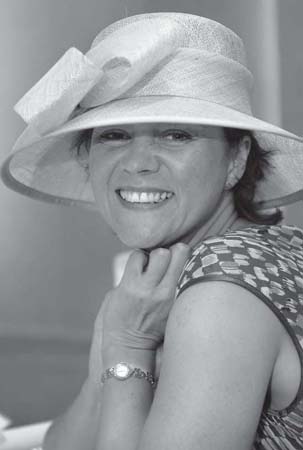
This picture shouldn’t work but it does. The shadow from the lady’s hat cuts through her eyes. Her hands are in an unattractive position and her shoulders are hunched. It is the radiance that shines through and makes this an attractive picture.
THE VALUE OF A BRAND
In this book, we often mention ‘brand.’ But what is it and how does it differ from ‘product’? Imagine two pairs of bridal shoes. They may have been made in the same town in Asia, with the same materials and to a similar quality; yet once the brand labels have been sewn in, one pair might be worth over twice the price of the other.
Never underestimate the value of a brand. A brand must be nurtured and protected. The best way to do this is by delivering a consistently high quality product right down to the finest detail. Make sure you back this up with everything you produce. For example, the Lovegrove website indicates that we specialize in wedding photography, with no mention of commercial, portrait, or other photography services. This makes Lovegrove Weddings a dedicated specialist provider. The ‘click path’ through the website is planned to educate and entertain potential prospects and encourage them to appreciate the Lovegrove product. The website utilizes testimonials and quotes from past clients and photographers alike to reinforce our core values.

Fig. 33 ISO 400 f/4 at 1/250th
To capture a great moment like this requires good timing. Julie is far better at capturing the decisive moment than me. It is for this reason that she shoots the speeches.
Our advertising follows a structure too and this reinforces our brand. Advertising the brand rather than the product is a great tactic to employ from time to time. Coca Cola do this all around the world. Getting our brand name in the editorial pages of the top wedding magazines has got to be one the easiest and most rewarding brand building activities we have ever undertaken. And it is better than free! I say that, because we have given wedding pictures to magazines to publish with our credits clearly shown and we have received free or heavily subsidized advertising in return. Another brand building opportunity is to associate your company with another strong brand. We did this in 2005 with both Estée Lauder and You and Your Wedding magazine. The exercise started with a trip to London where I took the editor of You and Your Wedding to lunch. Other team members joined us and we brainstormed the whole idea. Carol Hamilton, the editor at the time, managed to get Estée Lauder on board as they were launching a range of bridal cosmetics, and we provided the prize. The system was simple: we ran a joint competition to find the ‘UK bride of the year.’ The payback was enormous credibility through association with a top international brand, while the massive exposure generated in the media and in stores gave our own brand yet another boost.
